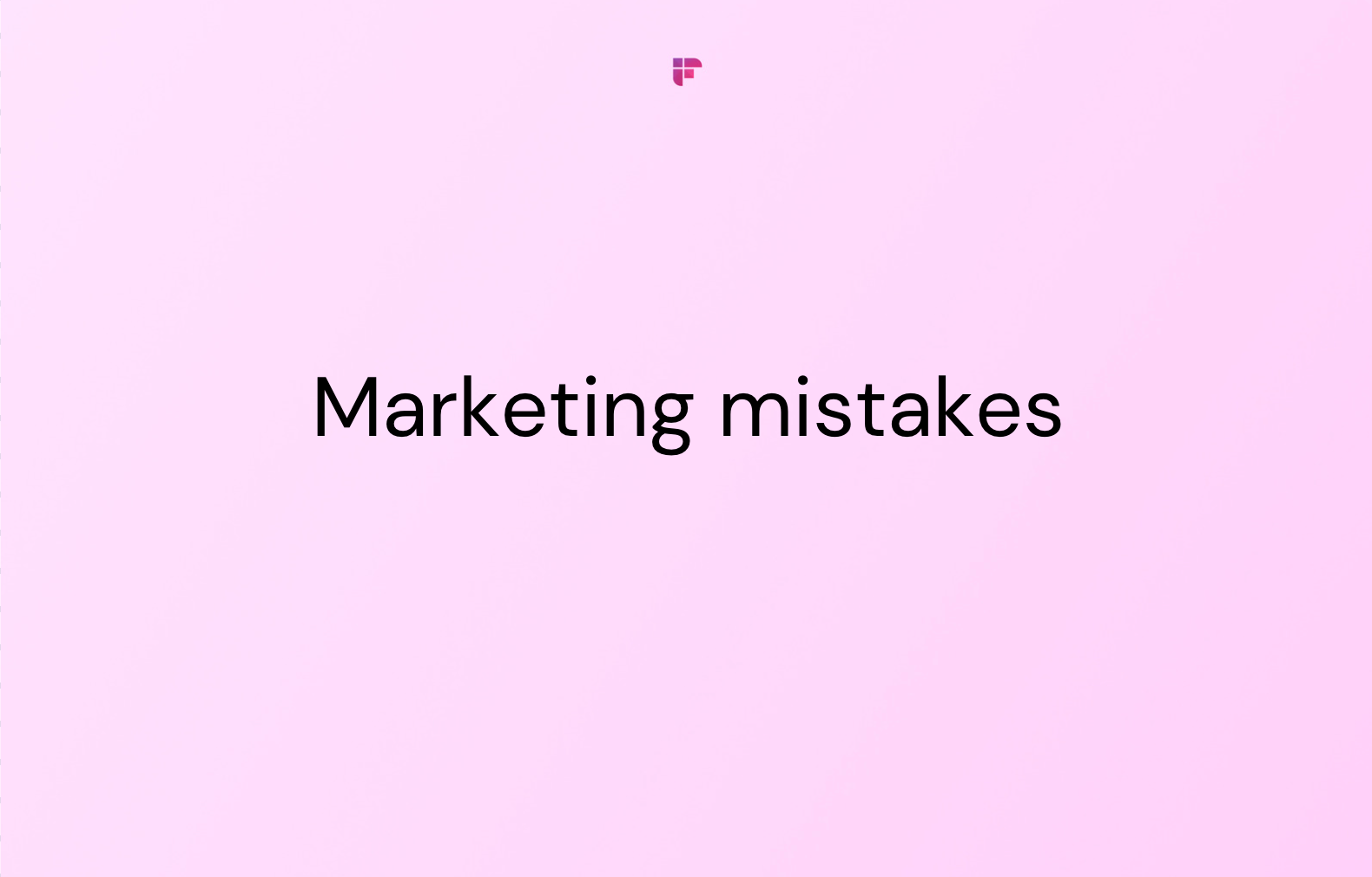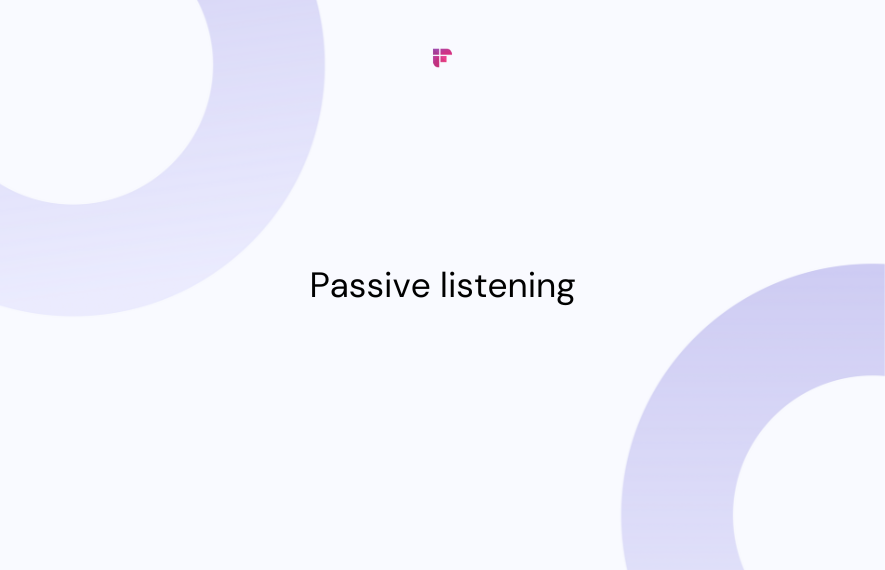Marketing axioms to swear by: It’s easier to get things right the first time, and the real test of efficiency comes from consistency.
A strong marketing direction connects a business with the target customers, builds brand identity, and takes a business closer to the ambitious lands of ROI that everyone dreams of but only a few accomplish.
Marketing mistakes are costly to a business's image. A marketing plan executed without direction is as good as plunging into an abyss of uncertainty. Calculated mistakes are salvageable, but floundering ahead without a plan is suicidal.
With the evolution of tech, automation, and resources, marketing has become easier, but only for those who have adapted to the changing landscapes quickly.
While the decisions you take for your business depend on many factors (variable and fixed), here are some of the most common mistakes marketers make.
10 Marketing Mistakes You Might Be Making Without Knowing And How To Fix Them
1. Market With a Strong USP
Marketing without a USP is like Guerilla Marketing. An interesting example comes from Cartoon Network’s LED signs in 2017: CN launched a marketing campaign in the US and set up LED signs in many places to promote one of their cartoons.
However, a resident in Boston thought the devices were bombs and called the police. It turned into a terrorist scare, and public transportation in some places was shut, causing disruptions all over.
Takeaway: A great marketing campaign needs a great USP. Always be very sure of the call-to-action you’re making and how it connects to your marketing campaigns.
Your unique selling proposition is what makes your product unique, and should be the driving catalyst of your campaigns. It’s a single statement that sets you apart from all the other people who’re in the same market as you.
In fact, your USP does more than just give your product identity. It helps you communicate with your customers and creates relevance for them directly. It’s a way of showing customers that their needs are addressed.
When establishing a USP, there are a lot of variables you have to brainstorm about. Here are a few questions you should be considering:
- Are you solving a problem no one else is solving?
- Is yours a luxury product or not?
- Are you selling to a specific lifestyle?
- Are you using materials/ resources in a new, more desirable way?
Remember that customers are constantly bombarded with ads these days. Generally, the first instinct of a consumer is to dismiss an ad unless it speaks to them profoundly. Unless the USP of your product is rightly targeted, you’re risking getting lost in the noise.
A lot of companies evolve their USPs to stay relevant in the changing markets. To ensure consistent demand for your product/ services, make your unique selling point the foundation of your marketing decisions, and review it often.
2. Don't Forget About Search Engine Optimization (SEO)
If done right, SEO can drive a 14.6% conversion rate.
SEO is how your customers find you on Google (or other search engines). Neglecting SEO or not giving it enough thought can easily result in your business being ‘invisible’.
No matter how good a product or service, if people don’t know about it, it doesn’t exist. It’s almost like grappling with the existential question: If a tree bloomed in a desert and no one saw it, did it bloom at all?
While SEO comes with a learning curve of its own, you only get better as you work towards it. While there are a million things you can do with SEO, it’s important to get the basics right first.
Basic search engine optimization practices include on-site optimization, researching keywords, and building backlinks to a site. Here are a few things you should be thinking about:
- Do your keyword research and create a content plan based on this research
- Write Unique Titles, Descriptions, and Content. Avoid duplicate or near-duplicate versions of your content across your site
- Optimize your Site’s Loading Speed
- Track Your Results With The Google Search Console
- Optimize your images for SEO
- Interlink your website
3. Focuse On Building Loyal Customers

In 2011, Netflix made a marketing decision that, according to CNET, cost the company 80,000 lost subscribers, and a 77% stock price drop within four months.
The company decided to enter the digital streaming market with a brand called “Qwikster”. They wanted to transform their mail-order rental model that had a market value of $16 billion at the time.
Juggling between its two identities of streaming and mail-order, resulted in a 60% price increase for those who wanted both services. This caused serious negativity, and Netflix had to quickly act with a series of new plans to make up for the gigantic loss.
Lesson to learn?
Answer: Accountability.
While businesses need to remain agile and change with the fast-moving trends, they need to communicate those changes to their audience well in advance before making them. This should also be part of a company's key sales strategy.
Imagine having spent a lot of time building a strong customer base, and then losing a major chunk of it because of a small tactical marketing error. Always consider the benefit you’ll provide to your loyal customers by making the changes you do.
4. Don't Forget About Mobile Users
A bad mobile experience is a sure disaster as it turns customers away from your business. Having a mobile-friendly UX for your website is very important not only to attract new customers but to retain loyal ones.
According to Google and ipsos data, companies that retail products at a physical location, but do not have a mobile-friendly website, cripple themselves as 82% of smartphone users turn to their devices to help them make a product decision.
Creating apps for your product/services has also picked up immensely in the last 2 decades. But if you’re not sure about app development yet, start with optimizing your website for mobile interface.
5. Grow Your Brand Identity With Blogging

There’s no way around the fact that nothing replaces good, quality content. It is the best way to create a reliable brand identity- a place where your customers come for advice, new knowledge and info.
Hubspot’s marketing statistics for 2020 also highlight that businesses with blogs have 97% more inbound links, which in turn increases organic traffic to your website.
Maintaining a rich repository of blogs also contributes to fostering the identity of a thought leader. You want to be a thought leader in your industry for one simple reason- people find you credible, and respect your opinion.
Apart from that, It’s a creative way for you to interact with consumers and for the consumers to interact with you, as well. Here are the 3 pillars of blogging right:
- Blog regularly: Create consistency for your blogs. Have timely posts published so when a prospective consumer arrives at your blog page, it doesn’t look like a 100-year-old library with relics.
- Create quality content: Nothing replaces the value of quality content. Quality content means that your blog should add value for people who spend time reading it. Try and avoid filler content and create a meaningful, creative copy.
- Interact with your audience: Interacting with your audience in the comment section of your blog keeps them engaged and coming back to your content. It also creates accessibility for your brand
6. Think About Competitive Intelligence
Coca-cola in the late 90s tried to introduce a new, sweeter version of its signature drink in a bid to outshine its competitor, Pepsi. Coke felt the need to regain market share with a new recipe.
The public response was underwhelming; so much so that people started hoarding the older version of the coke flavor, and started selling it on the black market for way higher prices!
Lesson? Don’t take hasty decisions, and rely on more than just intuition when taking fundamental marketing decisions. Do your research, and back your ideas with some solid intel.
Competitive intelligence is transforming business practices across the globe. Because the competitive landscape has changed, it is easier than ever for a new competitor to go to the market, release new product features, or expand into new markets.
The need for competitive intelligence has never been greater, and here are two truths about the market as of now in 2021:
- CI teams are growing: more than half (57%) of businesses have CI teams of two or more dedicated CI professionals, compared to just 37% of businesses two years ago.
- Competition continues to heat up: 90% of businesses report that their industry has become more competitive in the last three years, and 48% say it has become much more competitive.
7. Use More Videos
Compared to 12 seconds in the year 2000, our attention spans have significantly reduced in just 15 years. Thanks to the evolution of AI in marketing and the web in itself, graphics and video are becoming the default mode of communication not just among brands, but also people.

Creating videos for marketing and outreach is a great way of putting yourself out there. This also ties down very closely to your brand identity.
Using video assets is also a great way to tell your brand story. In fact, Unbounce says that using videos on landing pages can boost conversion up to 80%.
8. Don't Neglect the Potential of Remarketing
Focusing on a remarketing strategy is a great way to reach out to new customers and also sell your products. Not only does this help you acquire new leads, but also tells your customers that you’re constantly growing, adapting to the changes.
Another common digital marketing mistake that businesses make is neglecting to market to leads that already showed interest in their business. If a company spends all its efforts on acquiring new customers rather than focusing on existing leads, it could lose a huge chunk of prospective customers.
There are easy ways to do that. For example, create a new email marketing campaign, and send newsletters to your existing customers. Remember, re-marketing is about getting people to think about those purchases again, so you don’t lose them!
9. Re-define Your Target Customers as Markets Evolve
To build a solid foundation for your business, define your target market, and identify your typical customer. Let it function like the backbone of all your marketing strategies.
Or imagine a circle, with your target audience as the center. Everything you do, revolves around it. Remember- you can’t target everyone. By focusing on a predefined target group, you optimize your efforts with the maximum ROI.
Targeted marketing doesn’t mean you are excluding people who do not fit your criteria. Instead, it helps you channelize your efforts in the right direction, so people who demand your product, see your product.
Here’s an example of the perception slips marketers make when defining their targets:
As evident in the graphic, a skin and body care company can’t assume that their target audience is just women. You have to look beyond the stereotypical boundaries of demand-supply demographics and try to gather relevant data points that help you sell to the right people.
10. Don't Build The Website Once and Forget About it
Though the ecommerce industry is seeing rapid growth, many brands struggle to boost their ecommerce conversions.
While a website with a lot of life is a good thing, overdoing it can cost you in other ways. If your website is slow (non-optimized java, html, etc), you’re spending a lot of money building it, but no one is really seeing it.
Let’s remember that people are impatient. Ensure that your web hosting service is fast, and spend money on it if need be.
In a time when the market is overloaded with products and services, having a user-friendly website is an absolute must. Put efforts in optimizing your site to provide positive UX, and do a regular up-keep work on your website.
Last 2 cents
Even with the best planning, marketing mistakes can still happen. Learn to pace yourself when making big changes. If a plan doesn’t give you the results you expected, analyze and learn from mistakes instead of discarding it completely and jumping onto the next strategy.
Marketing right comes from a lot of trial and error, but understanding the need of your customers is of paramount importance. If a majority of your efforts are going towards improving customer experience, you’re on the right path ahead!






